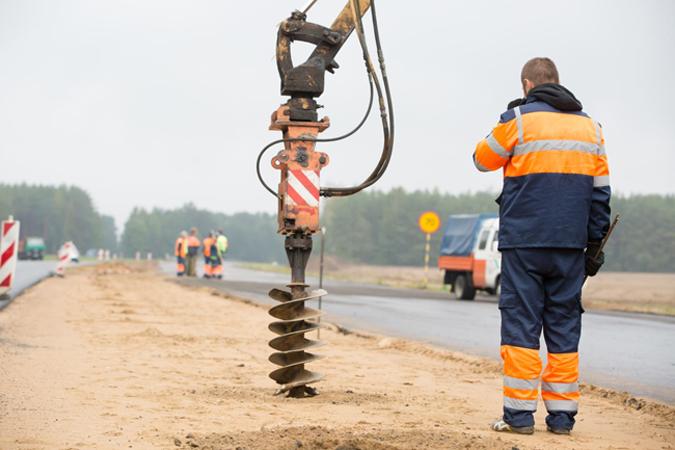Water consulting is a specialized field that plays a vital role in managing and preserving one of our most precious resources: water. One essential aspect of water consulting involves understanding the subsurface conditions where water sources are located or where infrastructure is planned. To achieve this, Water Consultant often rely on a critical procedure known as a “boring test.” This article delves into the significance of boring tests in water consulting, the process involved, and their impact on successful water resource management.
Understanding Boring Tests
A Boring Test, also known as a borehole test or drilling test, is a geotechnical investigation method used to explore subsurface conditions. The primary aim of this test is to obtain soil and rock samples from beneath the ground, which can then be analyzed to determine various physical properties of the subsurface materials. These properties include soil composition, groundwater levels, and the presence of contaminants.
The Importance of Boring Tests in Water Consulting
Assessing Groundwater Resources: One of the key applications of boring tests in water consulting is to assess groundwater resources. By drilling boreholes and extracting soil and rock samples, consultants can determine the depth, quantity, and quality of groundwater in a given area. This information is crucial for designing water extraction systems, such as wells, and for evaluating the sustainability of groundwater resources.
Identifying Contaminants: Boring tests also play a vital role in identifying potential contaminants in the subsurface environment. For instance, if a site is suspected of having been polluted by industrial activities or agricultural runoff, boring tests can help detect the presence of hazardous substances like heavy metals, hydrocarbons, or nitrates. Identifying these contaminants is essential for developing effective remediation strategies and ensuring the safety of water resources.
Designing Infrastructure: When planning infrastructure projects such as pipelines, water treatment plants, or reservoirs, it is crucial to understand the subsurface conditions. Boring tests provide valuable data on soil stability, rock formations, and groundwater conditions, which are essential for designing and constructing stable and durable infrastructure. Without this information, there is a risk of costly construction delays or structural failures.
Evaluating Soil Properties: Different soil types have varying properties that can affect water movement and filtration. For example, sandy soils typically have high permeability, allowing water to flow through quickly, while clayey soils have low permeability and can retain water. Boring tests provide detailed information on soil composition and properties, which helps water consultants design systems that effectively manage water flow and quality.
The Boring Test Procedure
Planning and Preparation: Before conducting a boring test, water consultants must plan the investigation based on the objectives of the study. This involves selecting appropriate locations for drilling, determining the depth of boreholes, and identifying the types of samples required. Permits and approvals may also be needed, depending on local regulations and the nature of the investigation.
Drilling: The actual boring test begins with drilling a borehole into the ground. Various drilling techniques can be employed, such as rotary drilling, percussion drilling, or auger drilling, depending on the soil and rock conditions. The drilling process involves using specialized equipment to penetrate the ground and reach the desired depth.
Sampling: Once the borehole is drilled, soil and rock samples are collected at different depths. These samples are carefully extracted and preserved for laboratory analysis. In addition to soil samples, water samples may also be collected to assess groundwater quality.
Laboratory Analysis: The collected samples are sent to a laboratory for detailed analysis. Tests are conducted to determine soil properties such as texture, density, and moisture content, as well as to analyze water samples for contaminants and other quality indicators. The results of these tests provide critical information for water consultants.
Reporting and Interpretation: After laboratory analysis, the data is compiled into a comprehensive report. This report includes detailed descriptions of the subsurface conditions, soil properties, groundwater levels, and any detected contaminants. Water consultants interpret the findings to provide recommendations for water resource management, infrastructure design, or remediation strategies.
Challenges and Considerations
While boring tests are a valuable tool in water consulting, they come with their own set of challenges and considerations:
Cost: Boring tests can be expensive, especially if multiple boreholes are required or if drilling conditions are challenging. The cost of drilling, sample collection, laboratory analysis, and reporting must be factored into the overall project budget.
Environmental Impact: Drilling operations can have environmental impacts, such as soil disturbance or the generation of waste materials. It is essential to follow best practices and regulations to minimize these impacts and ensure that the environment is protected.
Accuracy of Data: The accuracy of boring test results depends on the quality of the sampling and analysis. Proper techniques must be employed to ensure that samples are representative of the subsurface conditions and that laboratory analyses are conducted with precision.
Interpretation of Results: The interpretation of boring test results requires expertise and experience. Water consultants must be skilled in analyzing complex data and making informed recommendations based on the findings.
Conclusion
Boring tests are a fundamental component of water consulting, providing essential insights into subsurface conditions that impact water resources and infrastructure. By assessing groundwater resources, identifying contaminants, designing infrastructure, and evaluating soil properties, boring tests help ensure the effective management and protection of water resources. While the process involves challenges and considerations, the benefits of accurate and reliable data far outweigh the drawbacks. As our understanding of environmental issues and water management continues to evolve, boring tests will remain a critical tool for water consultants working to safeguard our water resources and infrastructure.

